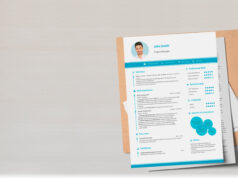
In business, much depends on your ability to describe yourself like a pro. Thus, we must learn how to write effectively, so why not improve your business writing?
How to Improve Your Business Writing?

What is common between e-mail messages, CVs, introduction, and recommendation letters? In the core, it all belongs to business writing – the sphere where every written word should build up your reputation and, at the same time, show your true personality. If you have already experienced ups or downs with some of your business writing tries, you know how critical an error can turn out to be.
A lot of people get puzzled when they hear the advice to ‘improve their business writing skill’: what the heck does it mean, do you have to learn formal cliches or master persuasion techniques (though, we’re not sure if it’s legal)? In reality, things get simpler as soon as you realize what you should focus on to make business writing better and succeed at work.
The first thing you have to keep in mind is that precision is your bosom friend in any business letter. Avoid vagueness, poetic expressions, unclear reasoning, and instead, think of your audience, objectives, and expected outcomes. What matters here is being able to explain your goals, make evaluations of your own skill sets, experience, and potential, molding it all together into a well-shaped message.
In the next paragraphs, we will talk about the key elements in improving English business writing; meanwhile, if you still feel low at writing in general and need some expert help, click here to get it from the leading professionals on WriteMyPaper4Me.com with hundreds of satisfied customers.
A Step by Step Guide to Writing Comprehensive Business Letters
Whereas many of you might consider the so-called ‘universal’ guides ineffective, motivating the opinion by the diversity of people and cases, we are more optimistic about it. In the end, though business writing covers numerous spheres and directions, its rules remain pretty much the same through decades and years. Therefore, if you pay some more attention to organizing and sequencing your email correspondence in the right, widely accepted way, you won’t lose from it!
Follow these steps, be persistent, and never give up – these are the conditions to kill it.
1. Identify WHY you write it

As simple as it is, every piece of business writing is done because of the desire to reach a particular (achievable!) endpoint. This result might be being hired as a personal assistant, editor, CEO, or whatever you want to become, informing a boss or colleague about an important turn that is likely to have an impact on them, or simply sending your content to the partnering company. As you see, each of these situations will be written differently and pursue different goals.
Once you’ve figured out the reason to write a letter, keep this objective clear in your mind and don’t ‘jump’ from one topic to another.
2. Don’t overcomplicate

While many of you tend to see business communication as the type that requires expressing your ideas in a special formal language (which is true) with hard-to-grasp words (which is totally wrong), business communication today is expected to be simple and clear. There is no need to load the reader with terms, lots of numbers, or conveying one and the same idea ‘in a clever way’ unless it’s a science article. In fact, acting like this, you will sound more stupid than you feared by using normal words in the text.
This is especially true about emails. Hundreds of emails might be sent by one and the same author during the day, and long letters can be too time-consuming. To make your writing effective, it’s better to enclose important data as a document, leaving the text body simple and precise.
3. Do the research job

Letters where you have to report about significant changes, gather info, or provide high-quality content very often need exceptional analytical abilities. Since it’s business, do not shy away from researching. Do it for the sake of your audience, give them the latest data and the most relevant figures. In case you are going to present this data before the target audience or send it via the Internet, be ready to go visual, again faithfully sticking to the ‘Simplicity Rule’.
4. Write a few drafts

This tip is so widely known that, ironically, it gets ignored most of the time. Sure thing, we aren’t trying to get you obsessed with every single email letter written on a usual working day. Yet, when it comes to an application letter or a cover letter, make the most of what your words can express. Are your goals big for this position? Are you ready to share your accomplishments and give all of you to the work you adore? Then it’s your chance to write about it. Multiple drafts especially concern the part where you describe strengths and weaknesses: make sure the vocabulary you use is neutral, and you neither condemn nor overestimate any side of yourself.
5. Do not exclude creativity

Now, we could have included the ‘Proofread’ tip as the final fifth step in writing a nice formal letter. But why should we? Proofreading is great and necessary, but here is something we sincerely want to share with you for your business letter not to be ‘raw’ and boring to death. If you are really interested in the purpose you create this piece of writing for, include visual information instead of the old-school charts, have a touch of informality in your language, just do something to get the reader engaged! For instance, having a mind map in a business plan won’t be odd; including a mini-portfolio with your creative works into your job application letter will blow the employer’s mind away, and a nice CV template will only add up to your social image at work.
To wrap it all up, we hope this guide was an interesting, non-trite read for you, and, having got the dose of inspiration, you will go on writing and become even more fluent and confident in each letter you will ever craft.












